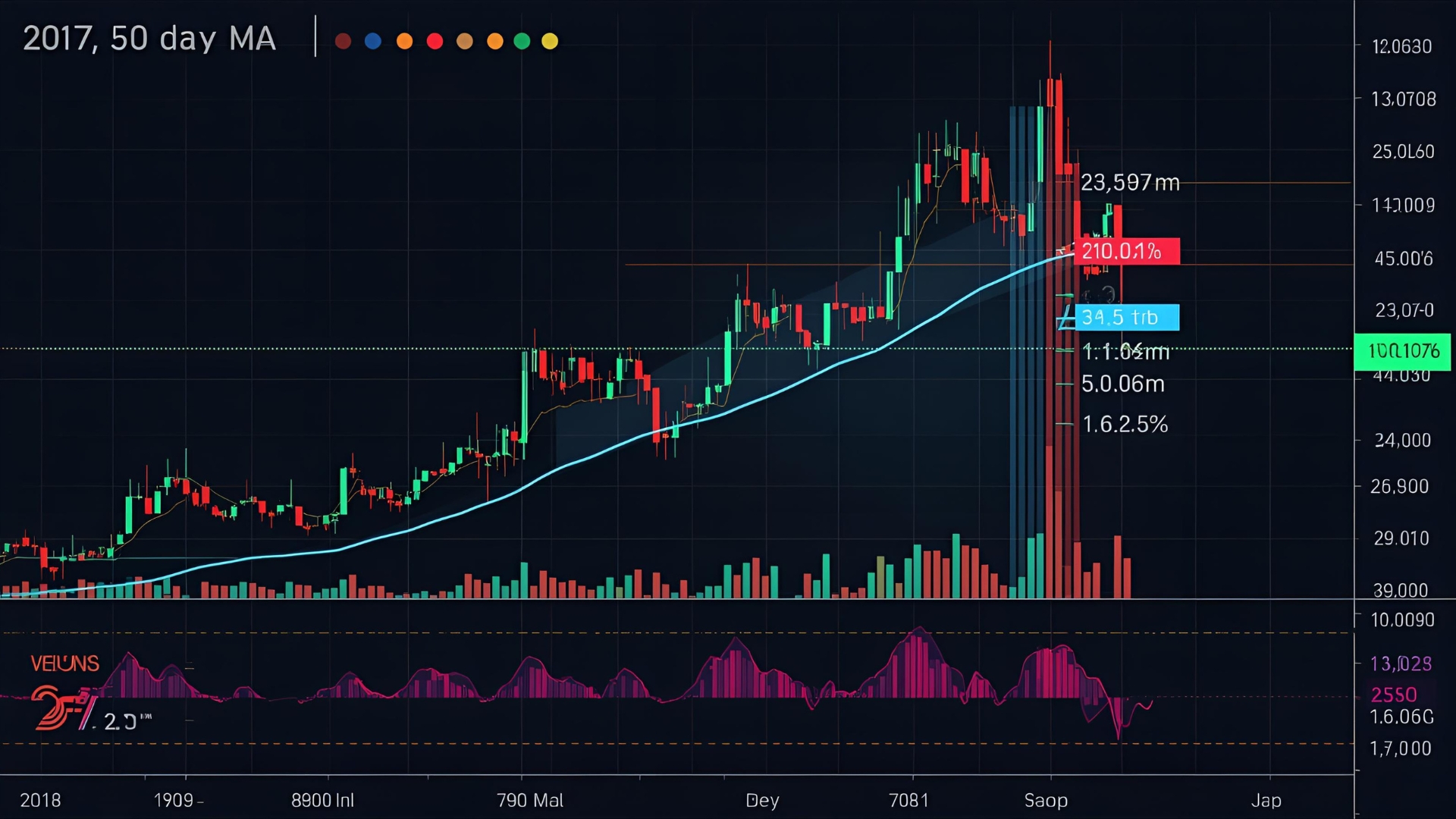Bitcoin Green Candle Is a Real Reversal Ahead?
Bitcoin Green Candle has traders buzzing. Is a true reversal forming—or a bull trap? Deep technical, on-chain, and macro analysis inside...

The latest strong green daily candle on Bitcoin has reignited debate across crypto desks and retail chats alike. After weeks of hesitation and choppy price action, a decisive move up can feel like the first breath of a new trend. But as any seasoned trader knows, one candle does not make a market. The question smart money is asking isn’t “Did Bitcoin pump?”—it’s “Does this candle change the probabilities?” To answer that, we need to look beyond the single bar and examine structure, momentum, liquidity, positioning, and macro context.
In this deep-dive, we’ll break down what a green impulse actually signals, where Bitcoin sits relative to key moving averages and market structure, how RSI, MACD, and Fibonacci levels frame risk, what derivatives and on-chain flows say about conviction, and which macro and narrative catalysts could propel or puncture this move. By the end, you’ll have a clear, balanced checklist to judge whether Bitcoin Green Candle is flashing a genuine bullish reversal or simply painting a bull trap at resistance.
TABLE OF CONTENTS
ToggleWhy One Green Candle Matters—And Why It Might Not
A wide-ranged green daily candle tells us buyers wrested control of the session and were willing to pay up into the close. That’s information. But whether it marks a trend reversal depends on context. Markets reverse when the path of least resistance flips. That flip is visible in market structure (higher highs and higher lows after a downtrend), momentum breadth (improving RSI and MACD across multiple timeframes), and acceptance above support and resistance zones with expanding volume. Without those ingredients, a strong candle is often just mean reversion.
Did Volume Confirm the Move?
A genuine shift in control typically arrives with expanding spot volume, not just derivatives churn. If Bitcoin rallies on thin participation, it can be more vulnerable to quick fades. What you’re looking for is a day where volume prints above the 20- or 50-day average alongside the green candle, ideally with follow-through in the next session, when buyers absorb offers and continue to lift prices during the following day’s Tokyo–London overlap, the odds of a bullish continuation rise.
Where Price Sits vs. 20/50/200-Day MAs

Trends earn their name by how price behaves around the 20-day, 50-day, and 200-day moving averages. In early reversals, Bitcoin first reclaims the 20-day, then the 50-day, and finally defends retests as new support. The 200-day remains the long-term line in the sand. A green candle that only tags the underside of a declining 50-day MA is progress, but not enough; a close back above and a successful retest often separate as a bullish reversal from a elief rally.
Technical Signals That Strengthen—or Undermine—the Reversal Case
Price action is king, but indicators can help frame probabilities. The trick is to align multiple, independent signals rather than rely on a single tool.
Market Structure: Higher Highs and Higher Lows
A reversal is more than an isolated pop; it’s a transition from lower highs/lows to higher highs and higher lows. For Bitcoin, watch the last significant lower high set during the prior downswing. If today’s green candle pushes through that pivot and closes above it, the trend is attempting to turn. The next tell is the pullback: strong reversals correct shallowly, set a higher low, and set a resumption high. Deep, laboured pullbacks that retrace most of the candlestick suggest lingering bear market pressure.
RSI and MACD: From Oversold Relief to Sustainable Thrust
On daily RSI, a move from sub-40 back above 50 often distinguishes a bounce from a trend shift. Sustained prints in the 55–65 zone during pullbacks are classic bullish behaviour. With MACD, look for the histogram to flip positive and the signal line to cross above zero. A bullish cross below zero can be early; a cross above zero typically shows maturing momentum. Multi-timeframe alignment—4-hour, daily, and weekly RSI/MACD all improving—raises the odds that the green candle marks more than a one-off squeeze.
Fibonacci Context: Retracements and Extensions
Many Bitcoin traders anchor on Fibonacci retracement zones. After a sell-off, reclaiming the 0.382 and then the 0.5 retrace suggests buyers are absorbing supply; acceptance above the 0.618 retrace suggests reversals are becoming real. On the upside, watch 1.272 and 1.618 extensions from the impulse leg for potential targets and profit-taking zones. If the green candle stalls precisely at a 0.5/0.618 retrace and rejects, it’s often a sign that the move needs more basing before trending.
Derivatives and Liquidity: Reading the Underbelly of the Move
Even when spot leads, derivatives can accelerate or sabotage follow-through. Understanding funding rates, open interest, and liquidation heatmaps helps distinguish organic demand from short squeezes and long traps.
Funding and Open Interest: Euphoria or Caution?
If the green candle arrives with funding flipping aggressively positive and open interest ramping, it may be fueled by leveraged longs chasing. That can work—until it doesn’t. Healthier signals include modestly positive funding with OI rising alongside spot volume, or even negative/neutral funding if the move began as a short squeeze that transitions into genuine spot demand. Watch for OI spikes without spot participation—those often unwind violently.
Liquidation Pockets and Liquidity Gaps
Price tends to move toward liquidity rather than away from it. If the latest candle sliced through a cluster of short liquidations, the path higher might clear temporarily, then stall near a liquidity gap where resting supply reappears. Conversely, if untested inefficiencies and prior supply zones sit just overhead, expect chop. For Bitcoin, these areas frequently align with prior range highs, weekly opens, and the underside of broken trendlines. Acceptance above those regions turns resistance into support.
On-Chain Metrics: Is Smart Money Accumulating or Distributing?
Unlike traditional markets, Bitcoin offers a transparent on-chain ledger. While no single metric is gospel, clusters of on-chain signals can corroborate—or contradict—the reversal narrative.
Realised Price, SOPR, and MVRV
The realised price (average on-chain acquisition cost) serves as a gravity line for aggregate holders. Sustained trading above the realised price is typically bullish. The Spent Output Profit Ratio (SOPR) tracks whether coins move at a profit or a loss; a persistent SOPR > 1 during pullbacks indicates profitable spending without capitulation.
MVRV (market value to realised value) gauges average profit; extreme highs warn of froth, while resets toward neutral zones often precede healthier uptrends. If the green candle coincides with SOPR reclaiming > one and MVRV rising from depressed levels, the case for a trend reversal strengthens.
Exchange Balances, Whale Behaviour, and Miner Flows
Declining exchange balances over time indicate coins moving to cold storage, reducing near-term sell pressure. Whale accumulation—large entities adding to balances during dips—typically supports higher prices, especially when coupled with steady miner distributions that don’t spike into strength if the green candle aligns with ongoing exchange outflows and chunky whale bids stepping up in the order book, buyers are likely in the driver’s seat.
Macro and Narrative Drivers: The Wind at Bitcoin’s Back…or in Its Face
Technical and on-chain setups thrive or struggle depending on macro currents and narratives that shape risk appetite.
Central Bank Policy, Dollar Dynamics, and Risk Sentiment
Bitcoin tends to benefit when real yields stabilise and the U.S. dollar index (DXY) softens, as global liquidity seeks riskier assets. If markets price a pause or cuts from major central banks, risk assets can catch a bid. A green candle that synchronises with easing yields, calmer credit spreads, and equities breaking higher has more macro tailwind than one fighting a rising dollar and risk-off tape.
Structural Catalysts: ETF Flows, Halving Effects, and Network Growth

Spot ETF flows, when positive and sustained, create repeatable buy-side demand. The Bitcoin halving historically compresses miner issuance and can tighten supply, particularly when network usage rises. Meanwhile, growth in Lightning, Ordinals/inscriptions, and broader layer-two activity can bolster long-term utility narratives. If the green candle emerges alongside net ETF inflows and improving network activity, the probability of bullish continuation increases.
Mapping the Probabilities: Three Plausible Paths
Markets are a game of scenarios, not certainties. With Bitcoin coming off a forceful green print, three broad paths capture most outcomes.
Scenario 1: Bullish Reversal Takes Hold
Price closes above the prior swing high and the 50-day MA, then retests that region on light volume to form a higher low. Daily RSI holds above 50 during the pullback; MACD crosses firmly above zero. Funding stays moderate while open interest rises alongside spot volume, signalling real demand rather than just leverage. On-chain, SOPR remains 1, and exchange balances continue to drain. On this path, dips are bought, and resistance becomes support.
Scenario 2: Bull Trap at Resistance
The green candle peaks right into the underside of a well-defined supply zone or a declining 50-/200-day MA. Funding jumps, OI spikes, spot lags, and within one to two sessions, Bitcoin loses the reclaim level and closes back inside the prior range. RSI fails to hold 50 on pullbacks, and MACD’s bullish momentum fizzles below zero. On-chain, there’s little sign of whale accumulation or exchange outflows. The result is a lower high that resets the downtrend.
Scenario 3: Range-Bound Churn
Neither bulls nor bears seize lasting control. Bitcoin oscillates between a defended support shelf and a sticky resistance ceiling, chewing through positioning. Funding flips back and forth around neutral, OI mean-reverts, and volume fades. Indicators coil; Bollinger Bands tighten; liquidity builds at range edges. Eventually, a catalyst forces expansion—but until then, patience and risk management dominate.
Building a Sensible Plan: Levels, Triggers, and Invalidations
Whether you trade intraday, swing, or invest, having a rule-based framework helps navigate green-candle euphoria.
Identify the Reclaim and the Retest
Pick the nearest key level the candle reclaimed—perhaps a prior daily high, weekly open, or the 50-day MA. If Bitcoin holds above that level on a daily closing basis and retests it successfully with shrinking volume, the reclaim is real. If it slices back below and accepts under it, the signal weakens. This simple support/resistance drill grounds decision-making.
Demand Confirmation Across Timeframes
Strong reversals line up from the 4-hour to the daily and often the weekly. Look for 4-hour higher lows, daily closes above structure, and weekly wicks that show demand absorption. Do indicators agree? Daily RSI 50, MACD rising, and moving averages curling are a different story than a single noisy thrust.
Keep Your Risk Defined
No thesis survives poor risk controls. Pre-define invalidation levels—places where your idea is wrong—and position size accordingly. If Bitcoin closes back below your reclaim level or forms a lower low beneath the setup’s anchor, accept the data and step aside. The market will be here tomorrow.
What the Latest Green Candle Means for Medium-Term Investors
For those thinking in months, not minutes, zoom out. Is Bitcoin above its 200-day moving average and building a base? Are ETF flows net positive over rolling weeks? Is network activity trending up? If those answers skew yes, a prominent green candle may mark the beginning of a new accumulation-to-markup phase. If not, it could be noise within a broader consolidation. Long-term investors can layer entries over time, letting the market prove strength while avoiding the trap of chasing parabolic bursts.
The Psychology Behind the Candle
Markets move on positioning and psychology as much as on math. When a heavy short base gets squeezed, the first leg is mechanical; the second leg requires fresh buyers. When momentum traders pile in, the test arrives on the first red day: do dip buyers step up, or do trapped longs puke? Recognising these dynamics helps you avoid reacting emotionally to every tick and instead focus on who is likely trapped and where the liquidity lies.
Bottom Line: Is a Real Reversal in Sight?
The signal is improving, but an actual Bitcoin reversal isn’t a single candle—it’s a process. If the market can convert this impulse into acceptance above resistance, hold higher lows on pullbacks, and attract spot-led participation. At the same time, on-chain flows lean supportive, then yes, the odds of a real trend change rise meaningfully. If, however, price rejects at the first central supply zone, funding overcooks, and spot lags derivatives, treat the candle as a bull trap until proven otherwise. Let the levels—and the follow-through—do the talking.
A Practical Reversal Checklist
Ask these questions over the subsequent few sessions: Did Bitcoin close above the reclaimed level and defend it on retest? Did daily RSI hold above 50 and MACD advance? Did spot volume confirm, and derivatives look balanced? Are on-chain metrics leaning constructive, with declining exchange balances and healthy SOPR? Are macro winds neutral-to-tailwind rather than headwind? If most answers are yes, the green candle likely signalled more than a fleeting squeeze.
Conclusion
A forceful green candle on Bitcoin is the market’s way of saying, “Pay attention.” But the verdict—bullish reversal or bull trap—arrives only when price action, momentum, liquidity, on-chain flows, and macro currents align. By focusing on reclaimed levels, structural higher lows, balanced derivatives, and supportive on-chain data, you can tilt odds in your favour without overreacting to a single print. Trade the process, not the hype, and let support and resistance—not headlines—guide your decisions.
FAQs
Q: Does a single green daily candle confirm a Bitcoin trend reversal?
No. A single candle is an invitation to investigate, not a conclusion. Look for closes above key resistance, a higher-low retest, and confirming momentum (daily RSI > 50, strengthening MACD) before calling it a bullish reversal.
Q: Which moving averages matter most when judging Bitcoin’s trend?
The 20-day shows short-term thrust, the 50-day captures intermediate trend, and the 200-day marks the long-term regime. Reclaims and successful retests of the 50- and 200-day MAs carry the most weight for trend reversal calls.
Q: How do derivatives metrics help avoid bull traps?
Overheated funding rates and spiking open interest without matching spot volume often signal chasey lever: balanced funding, steady OI, and strong spot participation better support sustainable Bitcoin upside.
Q: Which on-chain metrics best support a bullish thesis?
Watch SOPR sustaining above 1, MVRV rising from neutral zones, declining exchange balances, and evidence of whale accumulation. Together, these suggest buyers are absorbing supply rather than distributing into strength.
Q: What’s a disciplined way to trade after a big green candle?
Define your reclaim level, wait for a retest with lighter volume, and set explicit invalidation below the new support. If Bitcoin accepts back under that level, step aside. If it holds and momentum builds, scale in methodically rather than chasing.









